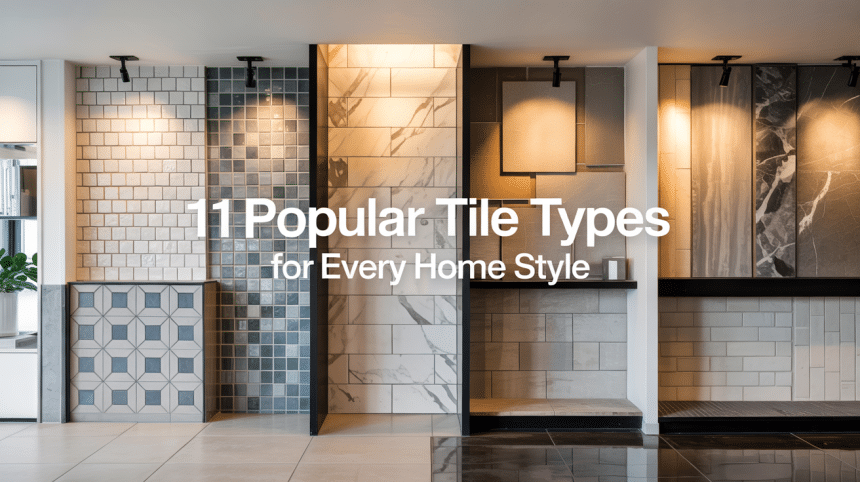Choosing the right tiles for your home can feel like a big task. With countless options on the market, how do you know which ones fit your style and needs?
Many homeowners struggle to pick tiles that look good and work well in different spaces. What most people don’t know is that each tile type has unique benefits for specific rooms.
The right tiles can make small rooms feel bigger, add character to plain walls, and even increase your home’s value. They can turn ordinary floors and walls into standout features that guests notice.
This guide covers 11 popular tile types that suit every home style. Read on to find the perfect tiles for your kitchen, bathroom, or living area without the costly trial and error.
Why Choosing the Right Tile Matters ?
Picking the right tiles goes beyond just looks. The tiles you select affect how your spaces work every day and how long they last. Wear resistance varies between tile types, with some lasting decades while others may chip quickly.
Water resistance is crucial in wet areas like bathrooms and kitchens. Cleaning needs differ too – some tiles need special care while others wipe clean easily.
Tiles shape the mood of your home and can boost its value. They set the tone for rooms and help pull together other design elements. The right choice balances your personal style with practical needs, creating spaces that both work well and look good.
- Durability factors: Consider foot traffic, impacts, and weight-bearing needs for each room
- Maintenance reality: Some tiles need sealing or special cleaners; others are nearly care-free
- Design impact: Tiles can make small rooms feel larger or create visual zones in open spaces
- Value consideration: Quality tile work in kitchens and bathrooms often returns investment at resale
Exploring the Most Popular Tile Types
Today’s market offers tiles for every taste and budget. From basic options to high-end choices, there’s something for everyone. Let’s look at how each type works in different spaces and what makes each one special.
1. Ceramic Tile
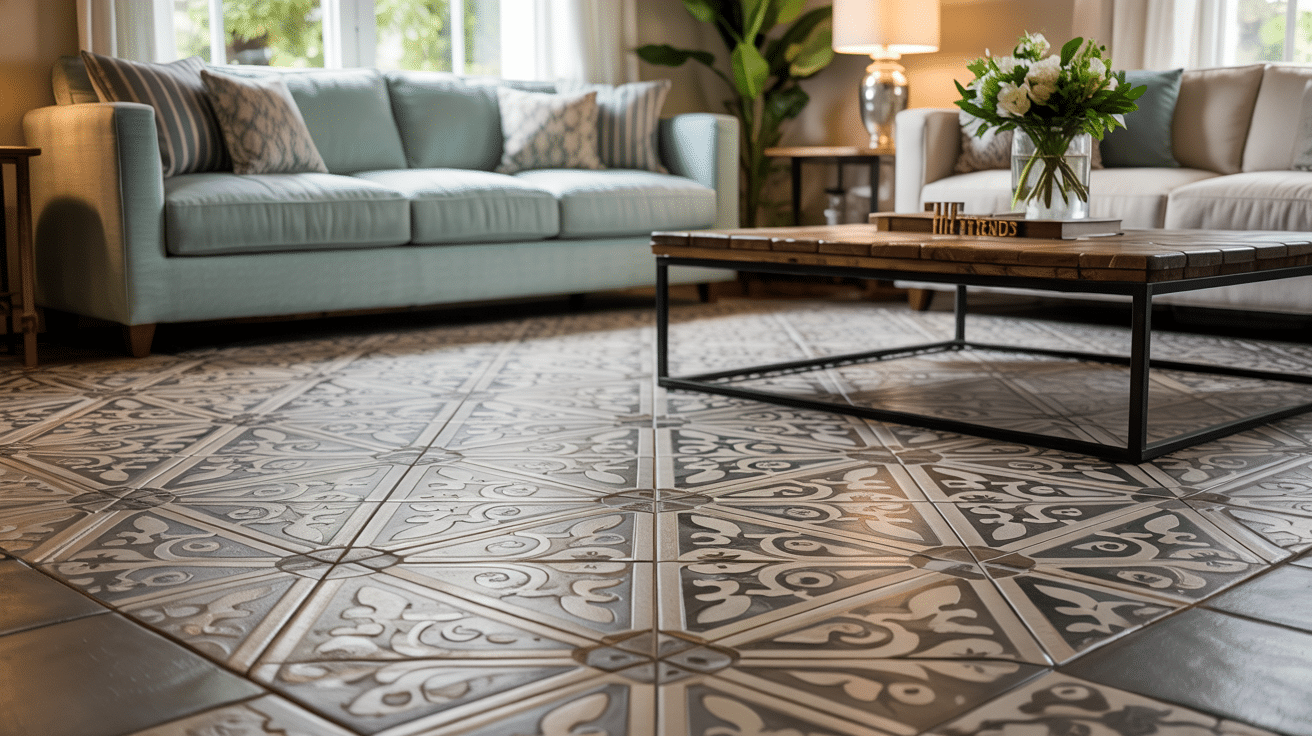
Ceramic tiles are made from clay and fired in kilns. They come in countless colors and patterns, making them a go-to choice for many homeowners who want good looks without high costs.
- Available in glossy or matte finishes for different visual effects
- Easier to cut and install than harder materials
- Less costly than most other tile options
- Simple to clean with basic household products
- Comes in many sizes from tiny mosaics to large format tiles
Unique selling point: Best value for money with the widest range of design options.
2. Porcelain Tile
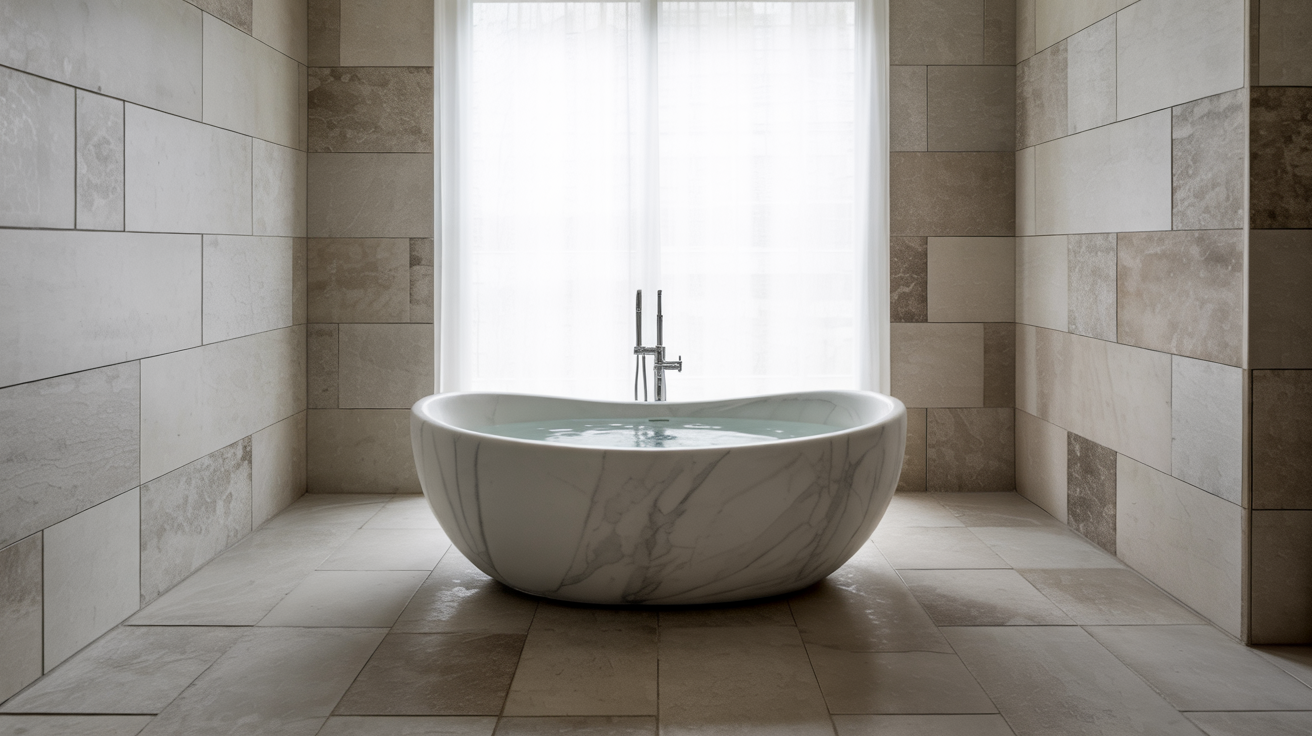
Porcelain tiles are made from finer clays fired at higher temps than ceramic. They’re much less porous, making them better for wet areas and outdoor spaces where moisture and freezing are concerns.
- Can look like stone, wood, or concrete at a lower price
- Works well with radiant floor heating systems
- Nearly waterproof when properly installed
- Holds up to heavy foot traffic without showing wear
- Color goes all the way through, so chips are less noticeable
Unique selling point: Exceptional toughness and water resistance in a good-looking package.
3. Marble Tile
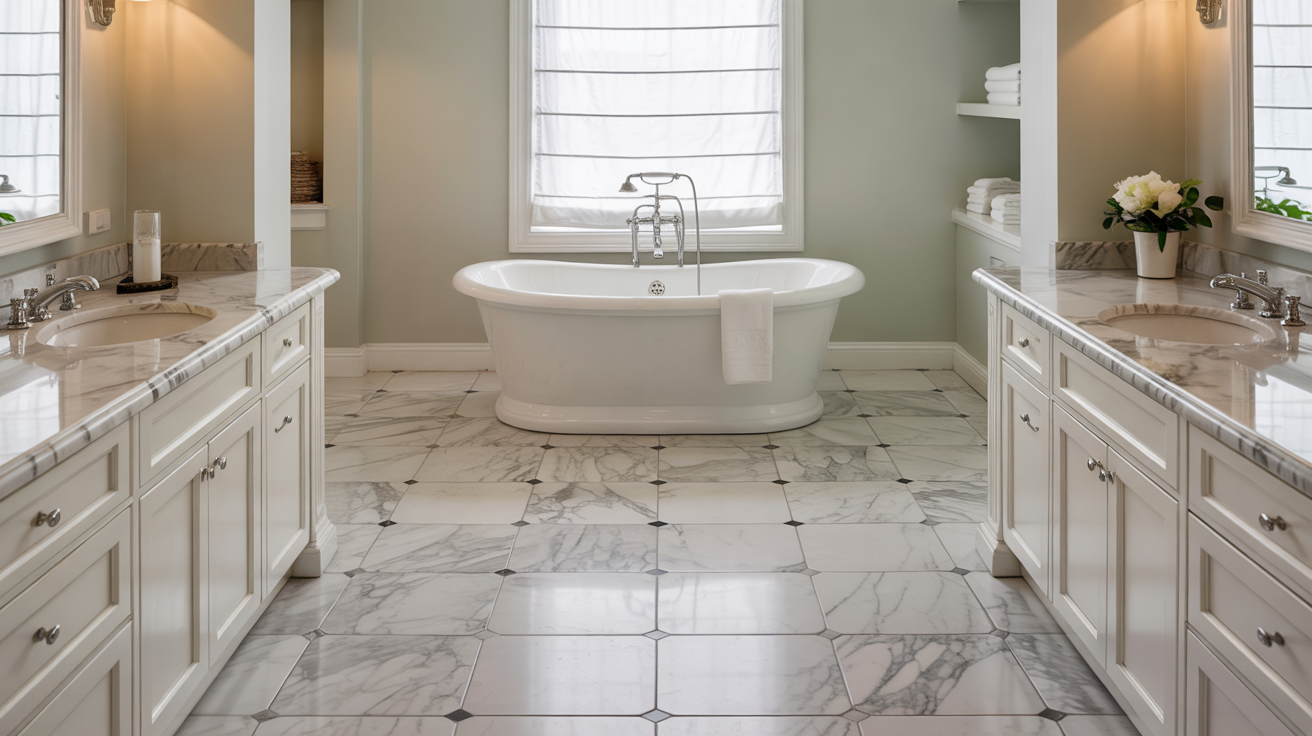
Marble tiles bring natural beauty and a sense of quality to any room. Each piece has one-of-a-kind veining and color shifts that can’t be copied by man-made materials.
- Adds instant value perception to any space
- Stays cool in summer, making it nice for warm climates
- Gets better looking with age and wear
- Works in both classic and modern home styles
- Available in white, black, green, pink, and many other shades
Unique selling point: Timeless luxury that has been prized for thousands of years.
4. Glass Tile
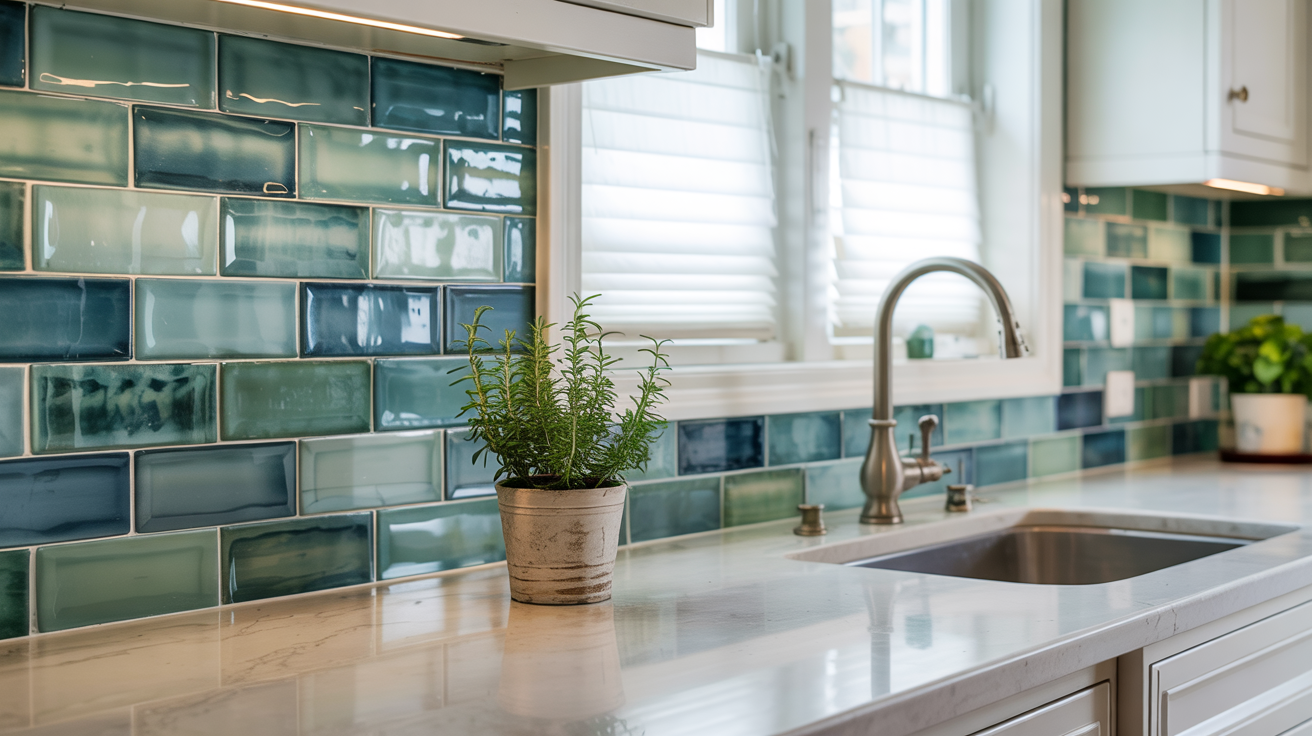
Glass tiles reflect light in ways other materials can’t. They add depth and brightness to spaces, making them perfect for dark kitchens or small bathrooms that need to feel bigger.
- Creates a clean, bright look that feels fresh
- Resistant to stains, mold, and mildew
- Won’t fade in color even in direct sunlight
- Can be made from recycled materials for eco-friendly homes
- Offers a smooth, easy-to-wipe surface
Unique selling point: Unmatched light play and color depth that makes spaces feel larger.
5. Cement Tile
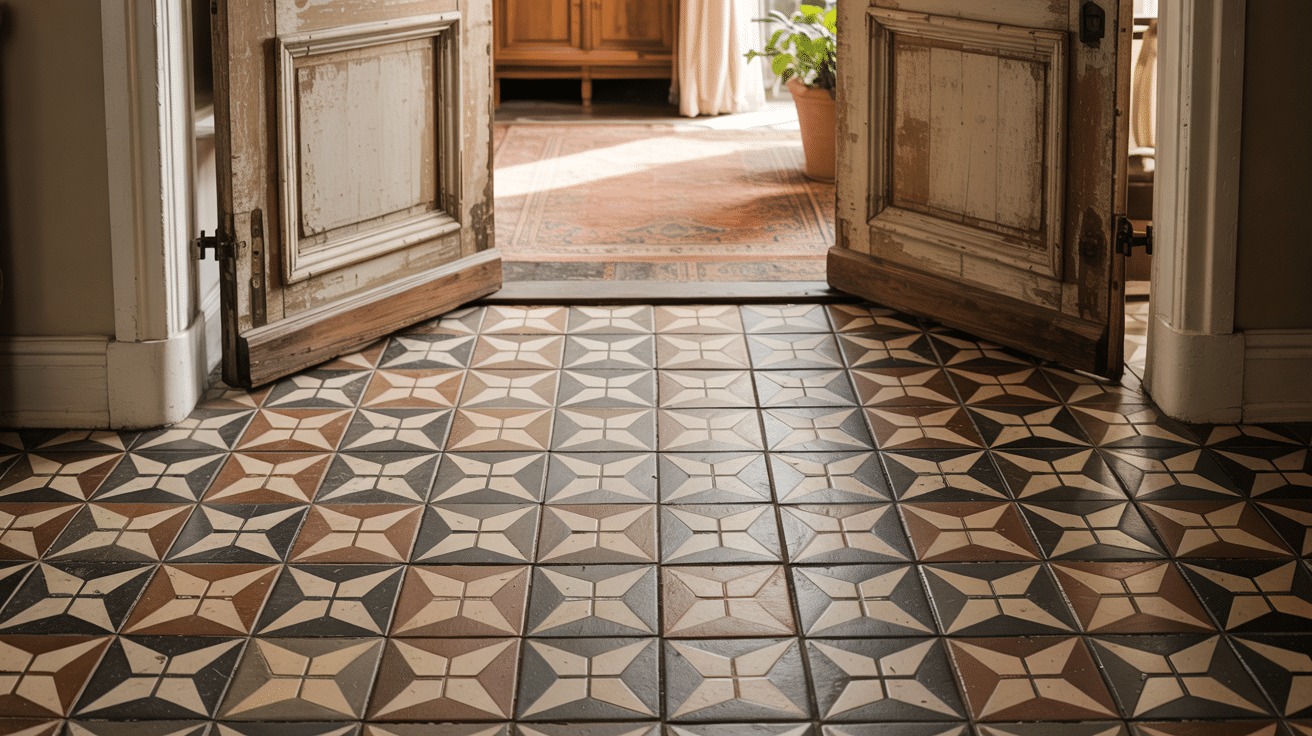
Cement tiles feature hand-pressed designs made with colored cement. They offer bold patterns and rich colors that create striking floors with old-world charm and modern appeal.
- Each tile is slightly different due to handmade quality
- Can be customized with your own pattern and color choices
- Grows stronger over time as the cement cures
- Creates instant character and visual interest
- Feels solid and substantial underfoot
Unique selling point: Statement-making patterns with a handmade quality that can’t be mass-produced.
6. Mosaic Tile
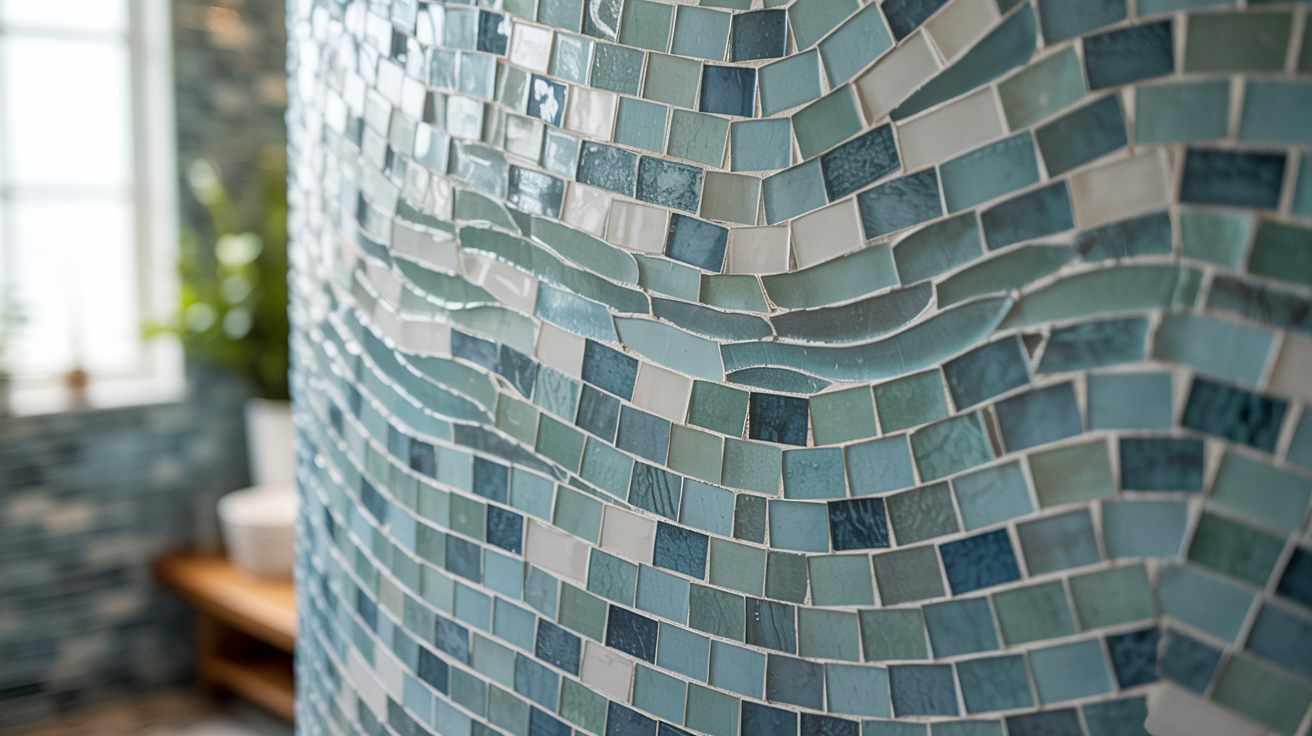
Mosaic tiles use small pieces arranged to form patterns or pictures. They’ve been used for thousands of years to create detailed designs on floors and walls.
- Can be shaped to follow curves and odd spaces
- Makes small areas like niches stand out
- Provides good grip in wet areas like shower floors
- Can mix colors for one-of-a-kind designs
- Works well as borders or accent strips
Unique selling point: Endless creative options for custom designs that tell your story.
7. Granite Tile
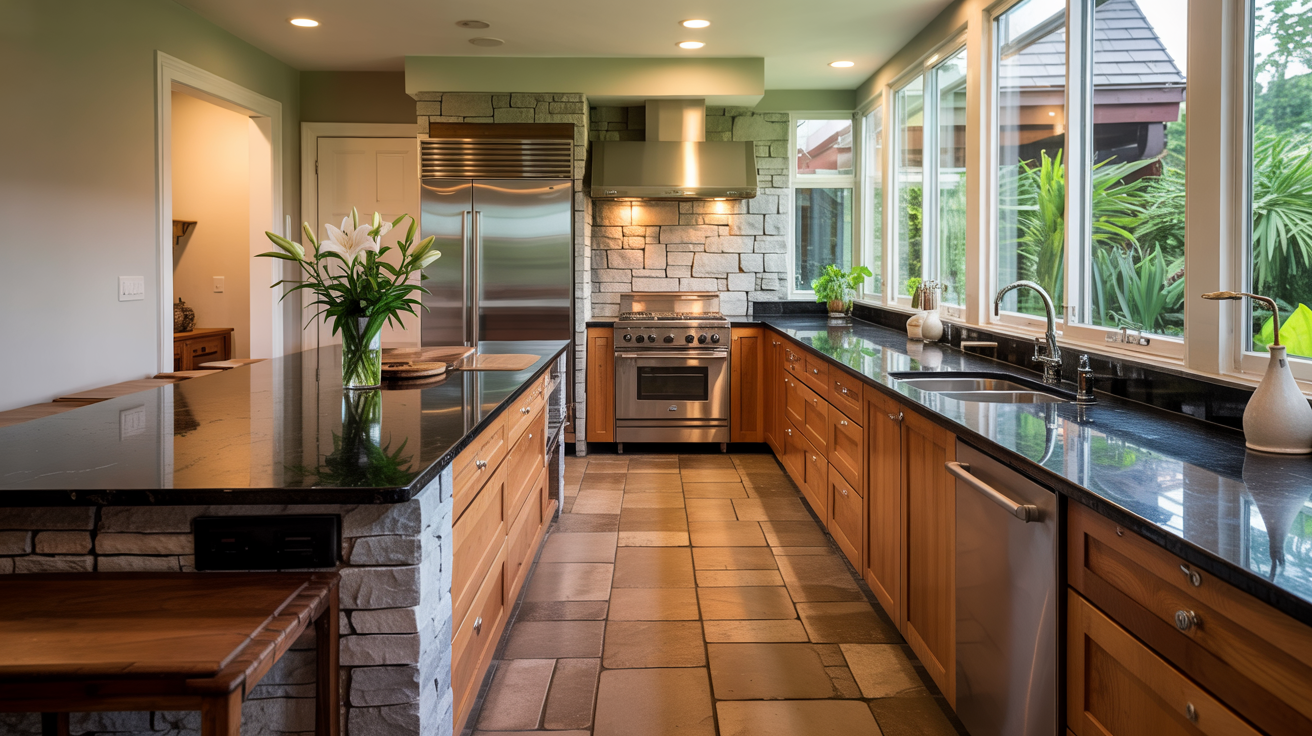
Granite tiles bring the beauty of natural stone in a more budget-friendly format than slabs. They’re known for their speckled look and incredible hardness.
- Stands up to heat, making it great near cooking areas
- Highly resistant to scratches from daily use
- Each tile has unique mineral patterns
- Comes in hundreds of natural color options
- Can be polished to different levels of shine
Unique selling point: Natural heat and scratch resistance that stands up to the busiest family kitchens.
8. Limestone Tile
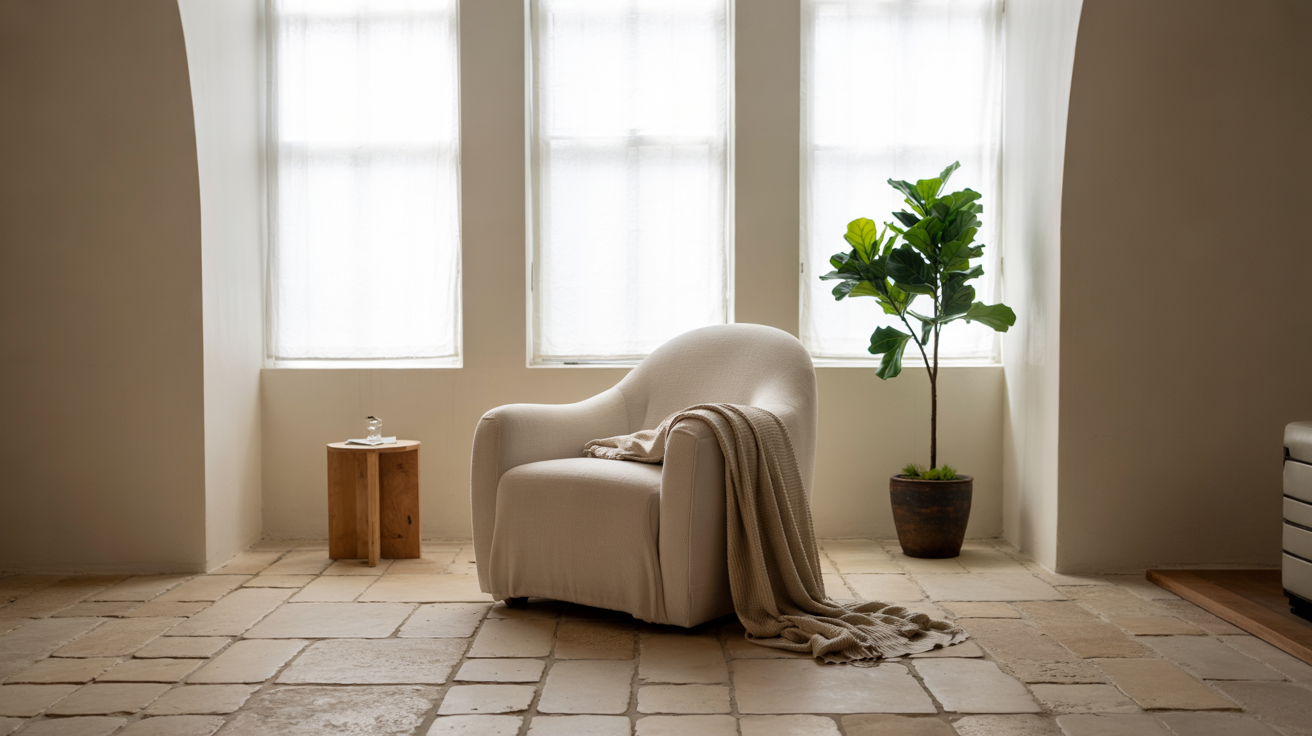
Limestone tiles have soft, natural tones that create calm spaces. They’re formed from ancient sea beds, giving them subtle fossils and peaceful, earth-based colors.
- Creates a worn, softly aged look that improves with time
- Offers natural warmth in both look and feel
- Comes in gentle creams, tans, and grays
- Works well in both formal and casual settings
- Can be honed, polished, or left more natural
Unique selling point: Subtle natural tones that create peaceful, stress-reducing spaces.
9. Travertine Tile
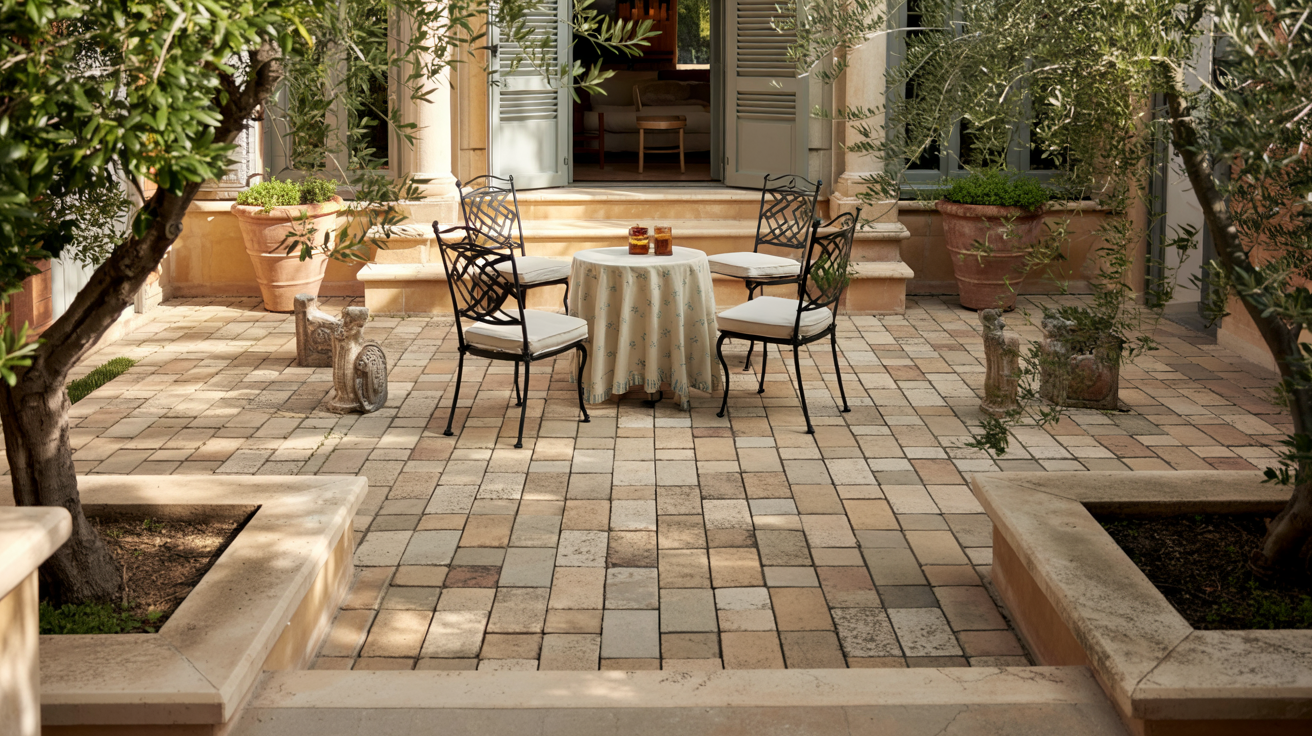
Travertine has small holes and pits that give it character. It’s a type of limestone formed in hot springs, with layers that create subtle stripes when cut into tiles.
- No two pieces look exactly alike
- Comes in warm, earth-toned colors
- Can be filled or left natural for different looks
- Stays cool underfoot in hot weather
- Has a soft, matte appearance that feels relaxed
Unique selling point: Natural texture that adds subtle interest without overwhelming a space.
10. Slate Tile
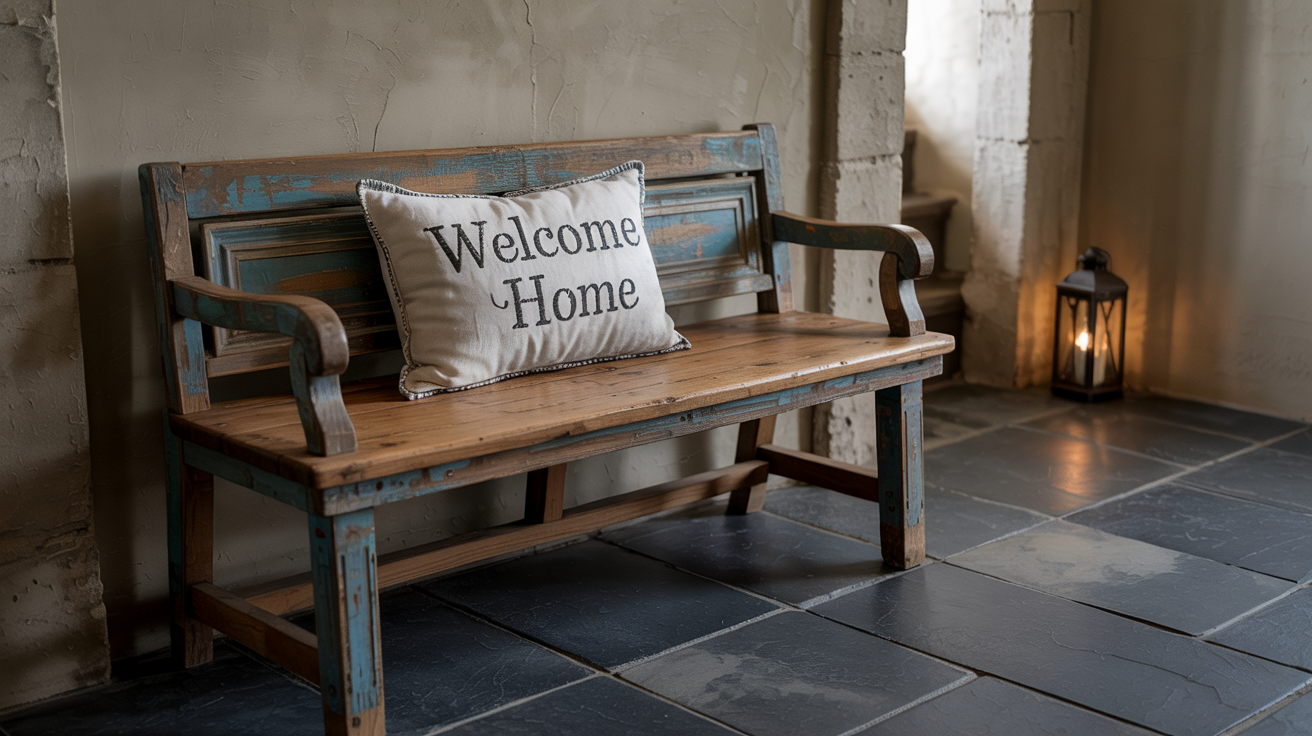
Slate tiles come from natural stone layers that split into flat pieces. They have rich dark colors with hints of blue, green, and purple under their main gray or black tones.
- Naturally slip-resistant even when wet
- Extremely tough and long-lasting
- Hides dirt well between cleanings
- Provides a strong contrast against light walls
- Works in both indoor and outdoor settings
Unique selling point: Natural slip resistance makes it one of the safest flooring choices for areas that get wet.
11. Terracotta Tile
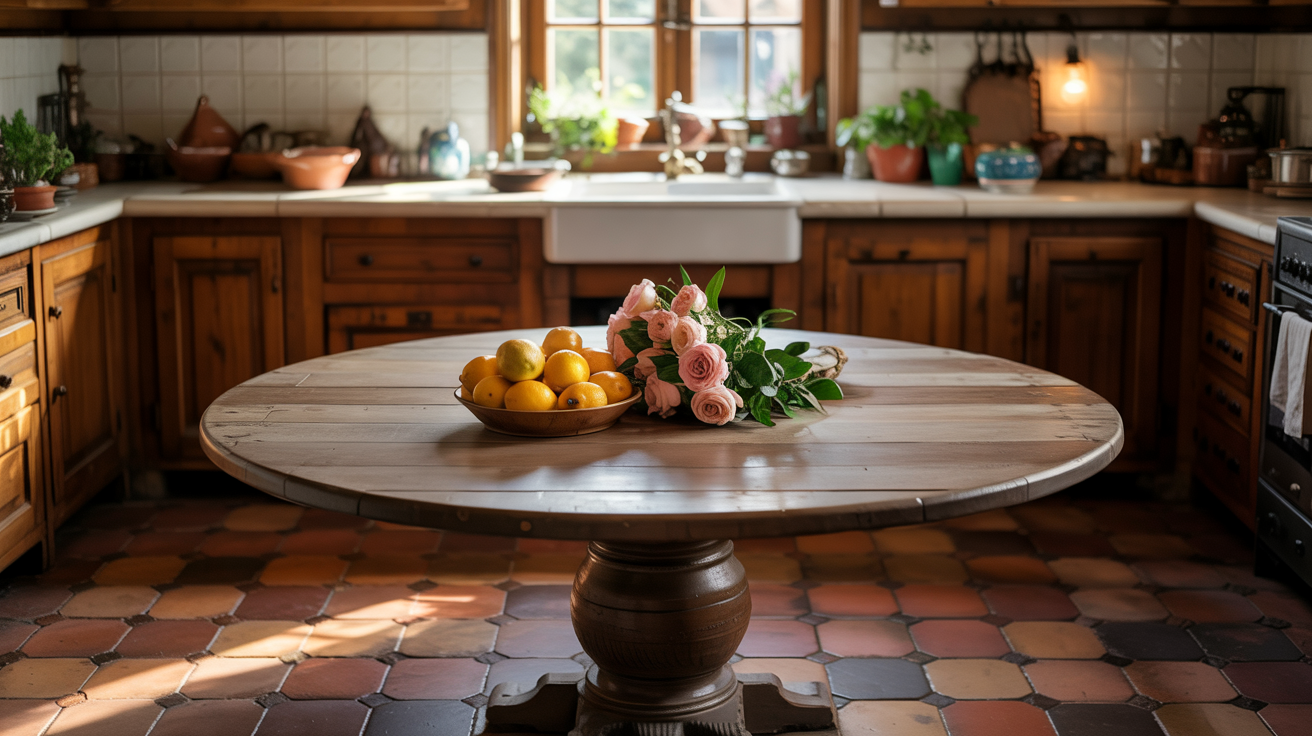
Terracotta tiles are made from red clay and have been used for centuries. They bring warmth and a sun-baked look to any space they grace.
- Creates an instant sense of history and warmth
- Looks better with age and wear
- Feels pleasant and warm underfoot
- Comes in rich reds, oranges, and browns
- Can be glazed or left natural
Unique selling point: Creates the warmest, most welcoming atmosphere of any tile material.
5 Common Maintenance Tips for Tiles
1. Regular Cleaning: The process of removing dirt and grime with appropriate cleaners suited to your specific tile type; prevents buildup that can damage or stain tile surfaces over time.
2. Proper Sealing: The application of a protective barrier to porous tiles like natural stone, cement, and terracotta; creates a shield against stains and moisture while extending the life of your tiles.
3. Grout Protection: The maintenance of the material between tiles; involves cleaning with a soft brush and specialized grout cleaner, followed by periodic resealing to prevent discoloration and water damage.
4. Prompt Spill Response: The immediate wiping up of spills, especially acidic substances like wine or juice; prevents etching on sensitive surfaces like marble and limestone.
5. Gentle Cleaning Tools: The use of non-abrasive cleaning tools like microfiber cloths, soft sponges, and pH-balanced cleaners; preserves the finish and texture of tiles while avoiding scratches and surface damage.
Conclusion
Choosing the right tiles for your home comes down to knowing what works best in each space. From the tough porcelain that handles busy entryways to the striking cement tiles that make a statement, each type brings its own strengths to your floors and walls.
Think about how you use each room, what kind of care you can commit to, and the look you want to create. Match these needs with the right tile, and you’ll end up with surfaces that last and look good for years.
Remember that proper care makes any tile last longer. Clean regularly, seal when needed, and fix small issues before they grow.
Which tile type caught your eye? Let us know in the comments which one you plan to use in your next home project!

